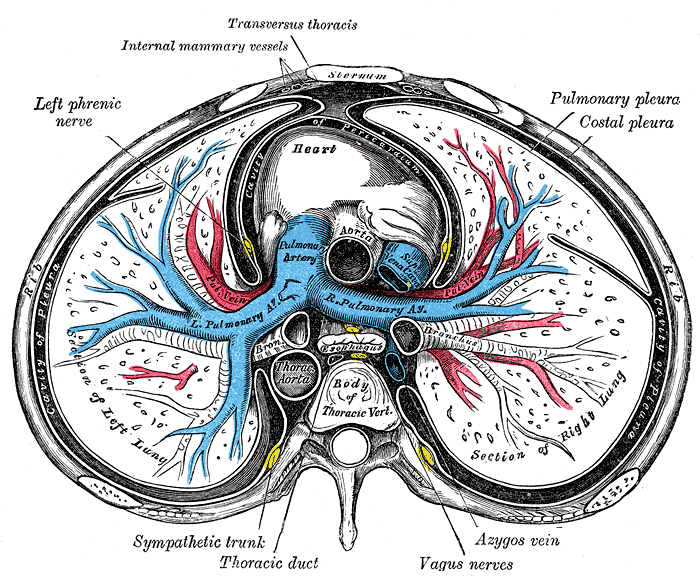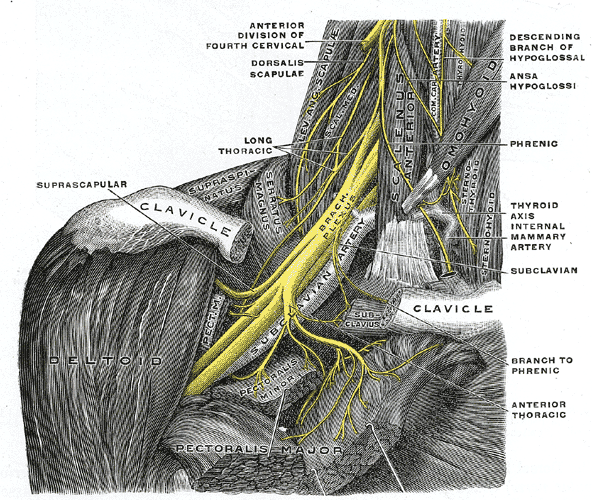phrenic nerve




The phrenic nerve is a mixed motor/sensory nerve that courses through the neck and thorax to innervate the diaphragm.
Gross anatomy
Origin
Arises from the ventral rami of the C3, C4 and C5 nerve roots, part of the cervical plexus.
Course
In the neck, the phrenic nerve lies on the anterior surface of the anterior scalene muscle, passes over the dome of the pleura and enters the thorax posterior to the subclavian vein. The right and left phrenic nerves have a different course in the thorax but as a general rule they descend as lateral as possible whilst keeping in contact with the mediastinal pleura. Both travel anterior to the hilum/bronchus on their respective side.
Left phrenic nerve
After entering the thorax posterior to the subclavian vein it descends lateral to the left subclavian artery, arch of the aorta, left auricle and left ventricle (in contact with pericardium) before piercing the dome of the left hemidiaphragm to enter the abdominal cavity.
Right phrenic nerve
In contrast to the left phrenic nerve, the right is in contact with venous structures and descends lateral to the superior vena cava, right atrium and ventricle, and inferior vena cava before passing through the vena caval foramen to enter the abdominal cavity.
Within the abdominal cavity both the left and right phrenic nerves divide into three main branches - anterior, lateral and posterior. These course peripherally in a radial pattern.
Supply
The phrenic nerve is the sole motor supply to each hemidiaphragm. It also provides sensory supply to:
- diaphragm (except the most peripheral diaphragm, which is supplied by intercostal nerves)
- mediastinal pleura
- pericardium
- central parts of diaphragmatic pleura and peritoneum
Blood supply
- arterial supply: pericardiophrenic artery (branch of the internal thoracic artery)
Variant anatomy
- course anterior to the subclavian vein
- course along the lateral border of the anterior scalene muscle
- may pierce the anterior scalene muscle
- accessory phrenic nerve (usually arising from the ansa cervicalis or subclavian nerve)
- may receive additional branches from the cervical or brachial plexuses
- may supply a branch to the subclavius muscle
Related pathology
Siehe auch:

 Assoziationen und Differentialdiagnosen zu Nervus phrenicus:
Assoziationen und Differentialdiagnosen zu Nervus phrenicus: